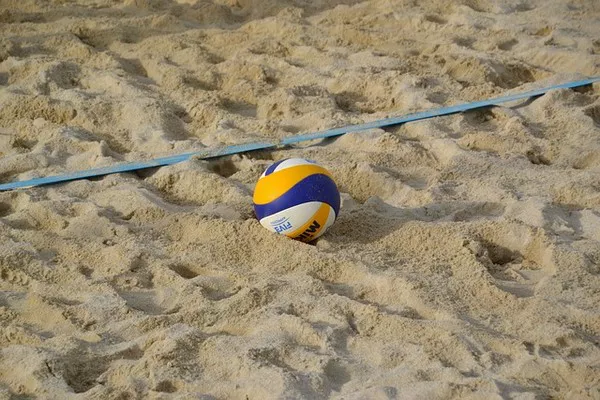Beach volleyball is a dynamic and exciting sport that requires meticulous attention to detail, especially when it comes to setting up the playing area. Properly marked lines not only ensure fair play but also contribute significantly to the overall safety and enjoyment of the game. In this comprehensive guide, we will explore the essential steps to set up beach volleyball lines to create an optimal playing environment.
Selecting the Right Location:
The first step in setting up beach volleyball lines is choosing an appropriate location. Look for a sandy area with sufficient space to accommodate the court dimensions, which measure 16 meters in length and 8 meters in width. Ensure that the site is level and free from any potential hazards such as rocks or debris to prevent injuries during gameplay.
Court Dimensions and Markings:
Understanding the official dimensions of a beach volleyball court is crucial to setting up the lines accurately. A regulation beach volleyball court is 16 meters long and 8 meters wide, with specific markings for different zones. The court is divided into two equal halves by the centerline, and each team’s side is further divided into a front and backcourt by the attack line.
Mark the boundaries of the court using weather-resistant boundary lines or tape. The lines should be clearly visible and contrast with the sand to avoid confusion during play. Use a measuring tape and pegs to ensure precise placement of the lines according to the official dimensions.
Setting the Net Height:
Another critical aspect of preparing a beach volleyball court is setting the net height. The official net height for beach volleyball is 2.43 meters for men and 2.24 meters for women. Use adjustable net systems with clearly marked height indicators to ensure accurate adjustments. Double-check the net tension to maintain a consistent height throughout the game.
Marking the Centerline:
The centerline divides the court into two equal halves and extends from the baseline to the net. Use a straightedge or measuring tape to mark the centerline accurately. Ensure that the centerline is straight and centered to maintain fairness in play.
Adding the Attack Line:
The attack line, also known as the three-meter line, is a crucial element in beach volleyball that designates the boundary for players when attacking the net. It is situated parallel to the net and 3 meters away from it on both sides. Clearly mark the attack line using tape or other weather-resistant materials, ensuring its visibility throughout the match.
Defining the Serving Area:
Beach volleyball has specific rules regarding the serving area. Players must serve from behind the baseline and within the imaginary extension of the sideline. Clearly mark the serving area using boundary lines or tape to avoid serving line violations during the game.
Maintaining Consistent Line Width:
Consistency in line width is essential to fair play and accurate judgment of in-and-out calls. Use a measuring tape to ensure uniform width for all lines on the beach volleyball court. This attention to detail enhances the overall playing experience and reduces disputes during matches.
Ensuring Player Safety:
Player safety is paramount in beach volleyball, and the setup of the court should prioritize this aspect. Inspect the playing area for any potential hazards, such as sharp objects or uneven surfaces, and remove them before the game begins. Additionally, encourage players to wear appropriate footwear to prevent injuries while navigating the sandy court.
Regular Maintenance:
To ensure a consistently high-quality playing surface, conduct regular maintenance of the court lines. Natural elements like wind, tides, and foot traffic can affect the visibility of the lines over time. Reapply or adjust the lines as needed to maintain optimal playing conditions.
See Also What Size Volleyball For Junior High?A Comprehensive Guide
Conclusion:
Setting up beach volleyball lines requires precision, attention to detail, and a commitment to creating an optimal playing environment. By following the steps outlined in this comprehensive guide, organizers and players alike can ensure a fair, safe, and enjoyable beach volleyball experience. Whether playing recreationally or competitively, the proper setup of lines contributes significantly to the overall success of the game, fostering a positive atmosphere for players and spectators alike.


